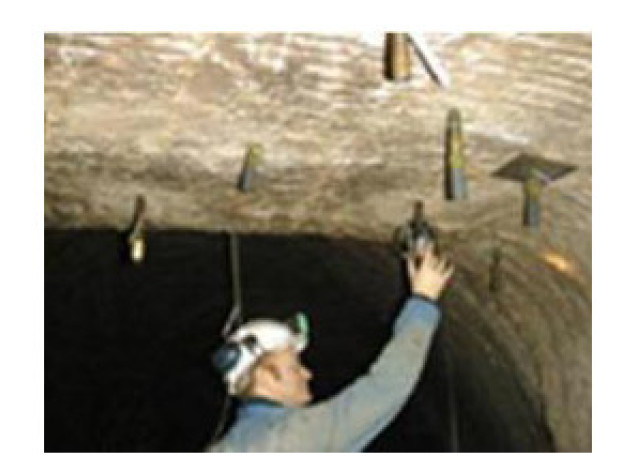An attractive method of bridge construction is to pass steel cables through ducts cast in the concrete bridge sections and to tension the cables after the bridge has been erected. The ducts are then filled with grout in order to protect the cables from corrosion. Unfortunately, the grout does not always completely fill the ducts which can lead to severe corrosion problems. This project is investigating the detection of tendon corrosion using guided waves propagating down the tendon. This has the major advantage that significant lengths of tendon could be inspected from one access point. Issues being addressed include the selection of the optimum wave mode(s) for propagation along the embedded tendon without prohibitive attenuation, the sensitivity of the modes to defects, and the practical excitation and reception of the waves. The inspection of the rock bolts which are used to support the roof of mine tunnels is a similar problem and is being addressed in parallel with the tendon inspection. The rock bolts are typically 2m long and it is necessary to know whether they are broken or corroded. The presence of defects will produce reflections which appear before the expected reflection from the end of the bolt.
Guided wave inspection

References
B N Pavlakovic, M J S Lowe, P Cawley, "High frequency low loss ultrasonic modes in embedded bars",J. Appl. Mech., vol. 68, pp.67-75, 2001
M D Beard, M J S Lowe, P Cawley, "Development of a guided wave inspection technique for rock bolts", Insight, vol 44, pp. 19-24, 2002.
M D Beard, M J S Lowe, P Cawley, "Ultrasonic guided waves for the inspection of tendons and bolts",ASCE J. Mat. Civ. Eng., vol. 15, pp. 212-218, 2003.
M D Beard, M J S Lowe, P Cawley, "Non-destructive testing of rock bolts using guided ultrasonic waves", Int J Rock Mech & Mining Sci., vol 40, pp. 527-536, 2003.